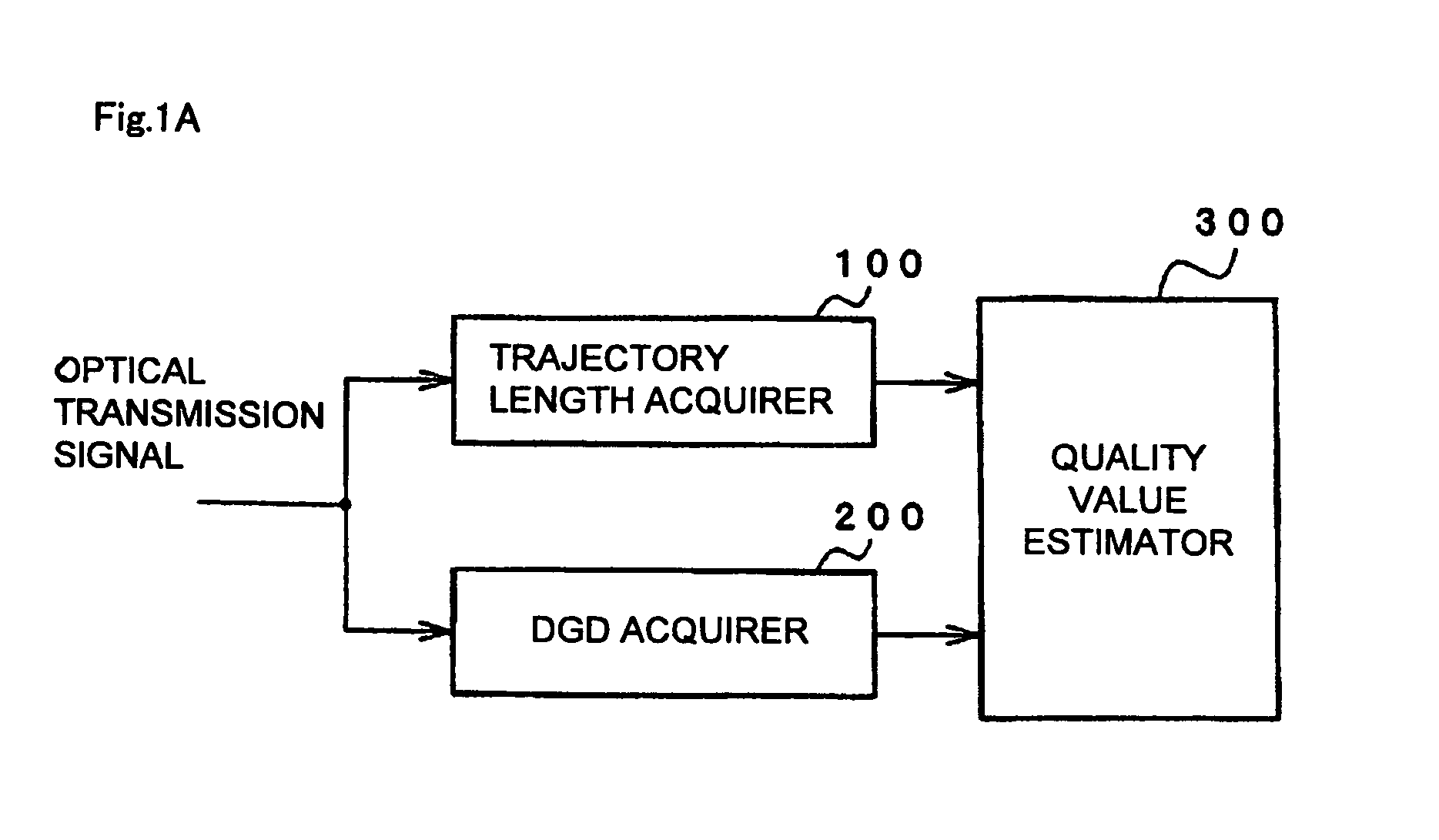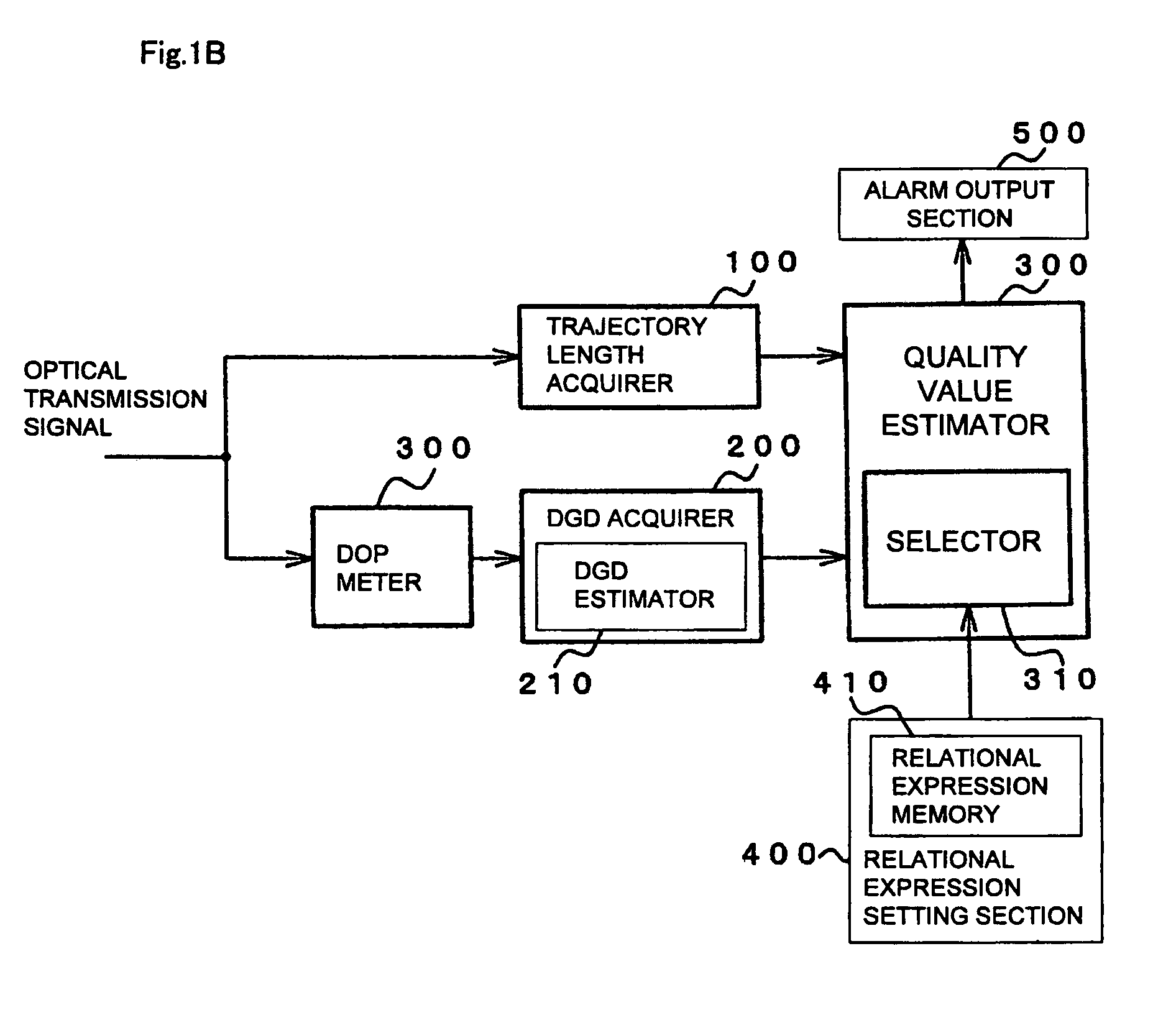Optical signal quality monitoring
a quality monitoring and optical signal technology, applied in the field of optical signal quality monitoring method and optical signal quality monitoring apparatus, can solve the problems of inability to accurately estimate q value, inability to definitively avoid polarization-mode dispersion at present, and significant affect the quality of a signal received, etc., to achieve accurate estimation, quality value, and variation in the quality of optical signals
- Summary
- Abstract
- Description
- Claims
- Application Information
AI Technical Summary
Benefits of technology
Problems solved by technology
Method used
Image
Examples
Embodiment Construction
[0035]FIG. 1A is a block diagram showing a basic configuration of an optical signal quality monitoring apparatus according to the present invention. In the configuration shown in FIG. 1A, the optical signal quality monitoring apparatus includes trajectory length acquirer 100 (implemented by SOP length monitor 1103 shown in FIG. 4) which measures the Stokes vector of an optical transmission signal over an optical signal modulation frequency band and acquires the length of the trajectory in the optical signal modulation frequency band traced out by the measured Stokes vector on a Poincare sphere (for example SOP length) as a measurement value, DGD acquirer 200 (implemented by CPU 1302 shown in FIG. 3) which acquires the DGD of an optical signal whose Stokes vector is measured by trajectory length acquirer 100, and quality value estimator 300 (implemented by CPU 1302 shown in FIG. 4) which estimates a quality value (for example a Q value) by using the length of the trajectory acquired ...
PUM
 Login to View More
Login to View More Abstract
Description
Claims
Application Information
 Login to View More
Login to View More - R&D
- Intellectual Property
- Life Sciences
- Materials
- Tech Scout
- Unparalleled Data Quality
- Higher Quality Content
- 60% Fewer Hallucinations
Browse by: Latest US Patents, China's latest patents, Technical Efficacy Thesaurus, Application Domain, Technology Topic, Popular Technical Reports.
© 2025 PatSnap. All rights reserved.Legal|Privacy policy|Modern Slavery Act Transparency Statement|Sitemap|About US| Contact US: help@patsnap.com



